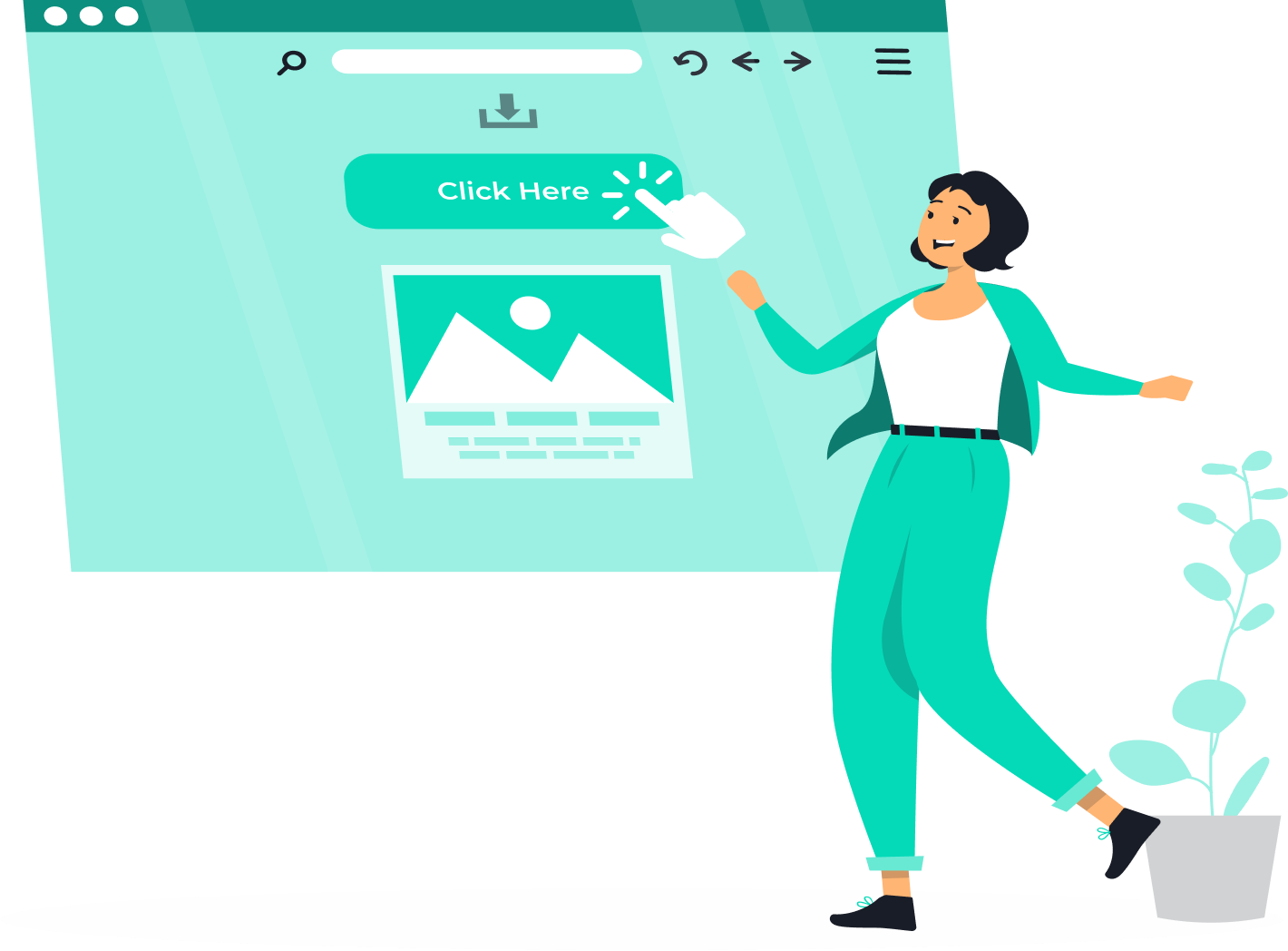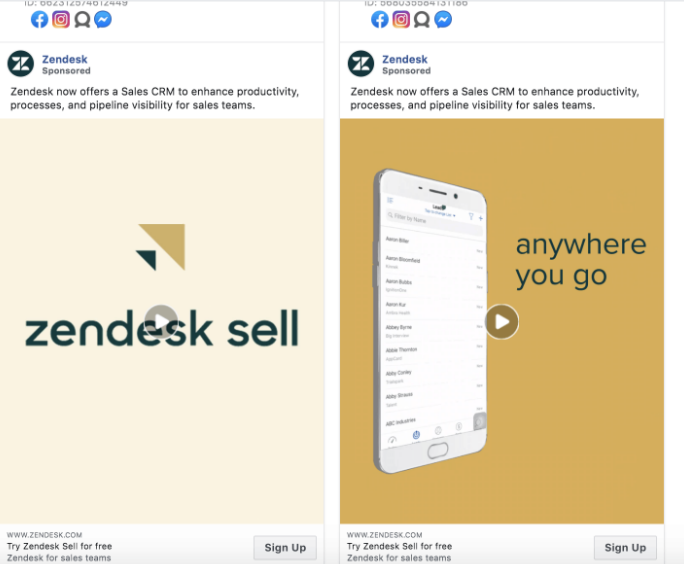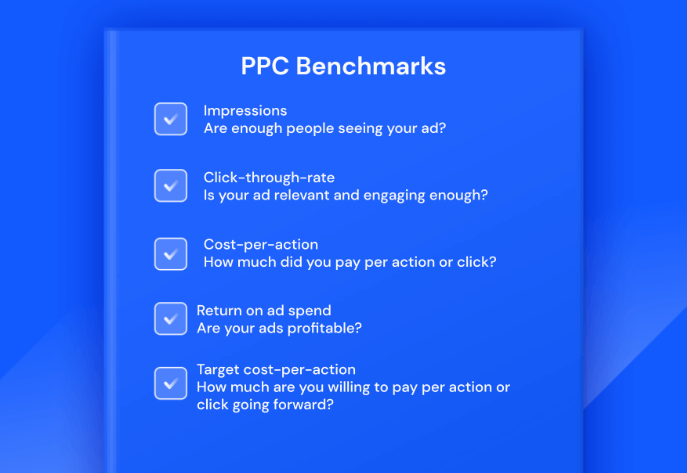
Home > Building an Effective B2B SaaS Pay-Per-Click (PPC) Strategy: 5 Key Components
Table of Contents
ToggleIn today’s hyper-competitive digital landscape, a solid PPC game plan is not just a luxury—it’s a necessity.
Why is a well-designed PPC campaign strategy so crucial, you ask? Well, let’s look at the numbers.
Did you know businesses make an average of $2 in revenue for every $1 spent on PPC advertising? [Source]. That’s an impressive return on investment that you simply can’t ignore.
However, it’s not just about the money but the strategic advantage PPC provides, like increased visibility, targeted audience reach, enhanced brand awareness, etc.
Let’s be real here—building an effective PPC strategy can feel like navigating a labyrinth – it’s like putting together a high-stakes puzzle, where each piece holds the key to success.
Don’t worry, though. We’ve got you covered! In this blog post, we’ll demystify B2B SaaS PPC and guide you through the five key components of a winning strategy.
Let’s dive in.
Here’s the thing: relying solely on SEO to get your business in front of the right audience is a time-taking process. It can’t be your go-to strategy if you need leads fast. That’s where PPC advertising comes in.
PPC is like having a direct hotline for your potential customers. You bid on relevant keywords, and your ads pop up prominently in search results or other websites. It’s like waving a flashy sign in front of people actively seeking solutions like yours.
But why should you invest in PPC when you have invested in SEO already?
While SEO is fantastic for long-term organic growth, PPC fills the gaps and amplifies your results.
SEO steadily improves your website’s rankings over time, while PPC ensures that your business shines at the top of search results, even for fiercely competitive keywords.
✅ Targeting audience in the different marketing funnel stages
✅ Delivering tailored messaging to your target audience
✅ Immediate visibility and fast results
✅ Retargeting and remarketing opportunity
✅ Compliments organic SEO strategy
✅Control over budget and targeting
✅ Cost-effectiveness
PPC gives your online presence a turbo boost. It amplifies your visibility and delivers tangible results that can make a real impact on your business.
But how can you make your PPC campaign effective? Here are five important elements to help you curate a solid SaaS PPC campaign.
67% of marketers believe defining their target audience is the most critical aspect of any marketing strategy. [Source].
When discussing the target audience in PPC, we’re talking about a specific group most likely to be interested in your offer. They share common characteristics, behaviors, and preferences, making them the ideal audience for your ads.
But what really drives a B2B SaaS PPC campaign? It’s segmentation.
By dividing your audience into smaller, more specific segments based on interests, purchasing habits, or life stages, you can create highly targeted ads that speak directly to their unique needs.
This level of personalization takes your campaigns to a whole new level and dramatically increases your chances of turning leads into devoted customers.
To segment the target audience, you need to dive into some research and analysis. Start by examining the demographics of your potential customers. It could be their:
These insights provide valuable clues about who your ads should be tailored to.
Besides the above, you also need to delve into the behavioral aspects of your target audience, like:
Understanding their behavior helps you create ads that resonate with their pain points and grab their attention.
Now, let’s discuss some of the best practices for identifying the right target audience.
| Strategies | Steps | Benefits |
|---|---|---|
| Leverage analytical tools | Gather data on website visitors, social media followers, or past customers | Uncover patterns and trends for a better understanding of the target audience |
| Engage with existing customers and conduct research | Conduct surveys and interviews | Gain firsthand insights into preferences, pain points, and motivations |
| Analyze competitors’ advertising efforts | Examine target audience, messaging, and ad placements | Gain insights for informed decision-making and inspiration |
| Embrace testing and iteration | Monitor campaign performance closely and make data-driven adjustments | Optimize targeting and maximize results |
Keyword research is like peering into the minds of your potential customers. It’s a fascinating blend of science and art that can make or break your pay-per-click (PPC) campaign.
To kick off your keyword research journey, head straight to the landing page(s). Study each page and pick out those juicy keywords hidden within the text.
If your website has top-notch content, you’ll likely gather a treasure trove of keywords that directly relate to your offering.
These keywords can be grouped into a few different types.
Also, put ourselves in your customers’ shoes. What kind of words or queries would they look for when they hunt for what you offer?
Pro Tip: Keyword research is an adventure in progress. Keep a close eye on the performance of your PPC campaigns. Analyze which keywords are hitting the bullseye and which ones need tweaking. Adjust, optimize, and watch your campaign soar to newer heights of success.
Ad copy is like a magic spell that captivates your audience and compels them to act. First things first, you need to know your audience inside out.
Picture them in your mind, and understand their desires, pains, and dreams. This deep understanding will help you weave a message that resonates with their exact requirements.
Shift the spotlight to how your products can make a difference for prospective customers. This is the key to driving them to your website.
Let’s make a simple tweak:
Here’s an example Ad Copy by Zendesk:

Talk about the benefits, always. People want to know what’s in it for them. Highlight the benefits your product or service brings to the table. Show them how it can solve their problems, make their lives easier, or bring them joy. Paint a vivid picture of the value they’ll experience.
When it comes to headlines, think of them as the catchy tunes that get stuck in people’s heads. Make them irresistible, intriguing, and impossible to ignore. A great headline grabs attention and lures your audience into reading more.
Moreover, your ad copy and landing page should be in perfect harmony. Ensure the messaging and design flow seamlessly from the ad to the landing page. This creates a delightful user experience that boosts conversions.
Highlight what sets you apart—a special offer, a one-of-a-kind feature, or an unforgettable customer experience.
Your landing page is the gateway to success for your PPC campaign. It determines whether a user will become a loyal customer or slip into the digital abyss. That’s why optimizing your landing page is absolutely crucial.
When your landing page is finely tuned, your Quality Score skyrockets, meaning you pay less per click and secure prime ad positioning.
Your ad becomes a magnet for clicks, captivating users with its relevance and irresistible appeal. And most importantly, conversions soar as you hook your prospects with a well-crafted landing page experience.
So, how do you create a result-driven landing page that works like a charm? Here are some key components to keep in mind:
✅ Optimize the headlines
✅ Improve page loading speed
✅ Include reviews and testimonials
✅ Use directional cues
✅ Leverage explainer videos & image sliders
✅ Reduce text on your landing pages
✅ Add trust badges & guarantees
With analytics, you can uncover valuable data that guides your decision-making and helps you optimize your campaign for maximum impact.
Analytics helps to track and analyze performance metrics and monitor the feasibility of your PPC strategy. By leveraging analytical tools and tracking key metrics, you can gain valuable insights to make data-driven decisions.
You can fine-tune your campaign by measuring the effectiveness of your ads, keywords, and landing pages.

To make the most of analytics and measure the performance of your PPC campaign, let’s explore some best practices that can elevate your results.
👉Quality Score
👉Impressions
👉CTR
👉Average Position
👉Impression Share (%)
👉Conversion Rate (%)
👉Source and Conversion Tracking (UTM tags, Pixel tags, Automated conversion tracking)
👉Cost per Click (CPC)
👉Cost per Acquisition (CPA)
👉 Revenue on Ad Spend (ROAS)

A killer B2B SaaS Pay-Per-Click (PPC) strategy can truly transform your business. It’s like having a secret weapon that drives targeted leads, boosts conversions, and skyrockets your revenue.
Ensure to start with the foundation: keyword research. This is where you uncover the magic words that resonate with your audience.
But it’s not just about catching their eye – you’ve got to reel them in with persuasive ad copy. This is where you show off the unique value your SaaS solution brings to the table.
Now, imagine your audience takes the bait and clicks on your ad. What do they find? An optimized landing page that feels like a cozy nook tailored just for them. It’s user-friendly, delivers the information they’re looking for, and makes it easy for them to take action.
Keep an eagle eye on your PPC campaigns. Monitor, analyze, and crunch those numbers.
And here’s the secret ingredient to long-term triumph: continuous optimization and iteration. Review and refine your keyword selection, ad copy, landing pages, and targeting parameters regularly.
In this competitive B2B SaaS landscape, a well-crafted PPC strategy is the catapult that propels your brand visibility, attracts top-notch leads, and pumps up that bottom line!
Ready to supercharge your PPC campaigns and skyrocket your conversion rates? Get a peek at our proven strategy. Take the first step towards success! Schedule your one-on-one expert session today!
Pushkar Sinha is the Head of Digital Marketing at FirstPrinciples Growth Advisory. With 15+ years of expertise, he specializes in SEOfor European, American, and Indian markets, both in agency and in-house roles. His holistic skill set encompasses Google Ads, Affiliate Marketing, SEO, SEM, PPC, E-Commerce, and Project Management. Pushkar is...